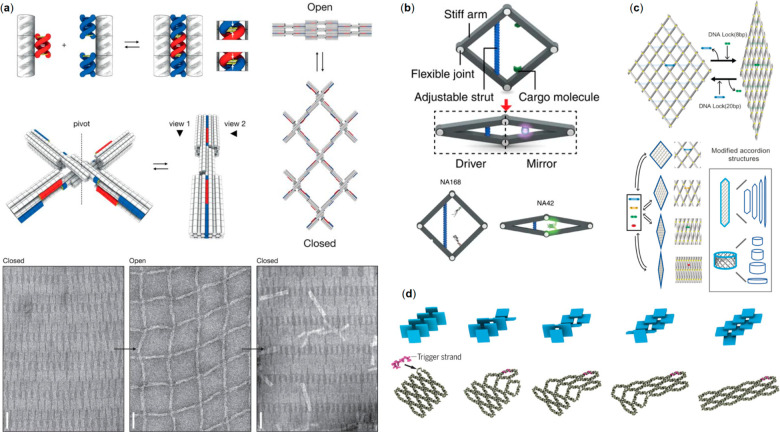Figure 2.
DNA nanostructures for information relay and regulation. (a) Top left panel: a dsDNA protrusion (red) fits tightly to the designed dsDNA recession (blue) thus stacking the counterparts through non-base-pairing interaction. Middle left panel: A reversible DNA switch with designed protrusions and recessions. Middle right panel: Working principle of a reconfigurable large-scale network obtained by polymerization of multiple switches. Bottom panel: TEM images verifying reversible switching of the network (closed state: high magnesium concentration; open state: low magnesium concentration).39 (b) A rhombus-shape DNA origami nanoactuator; movement on the driver side (left) is mirrored to the right side. The lower panel depicts the regaining of eGFP fluorescence by bringing its two halves in close proximity using the actuator.70 (c) DNA accordion rack that can adapt different geometries relying on DNA lock strand positioning.71 (d) Long-range step-by-step information relay process in DNA “domino” nanoarrays, launched by the hybridization of a trigger strand to a single unit.72 (a) Reprinted with permission from ref (39). Copyright 2015 The American Association for the Advancement of Science. (b) Reprinted with permission from ref (70). Copyright 2016 Springer Nature Ltd. (c) Reprinted with permission from ref (71). Copyright 2018 John Wiley & Sons. (d) Reprinted with permission from ref (72). Copyright 2017 The American Association for the Advancement of Science.

